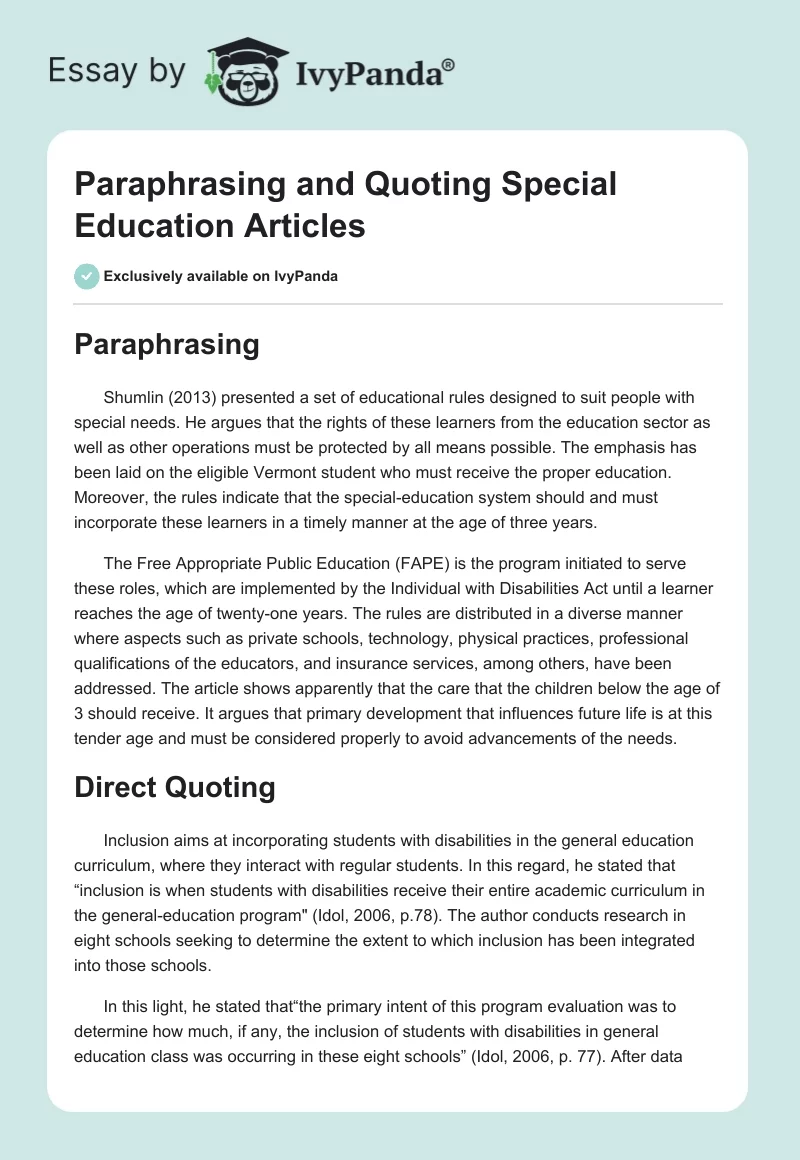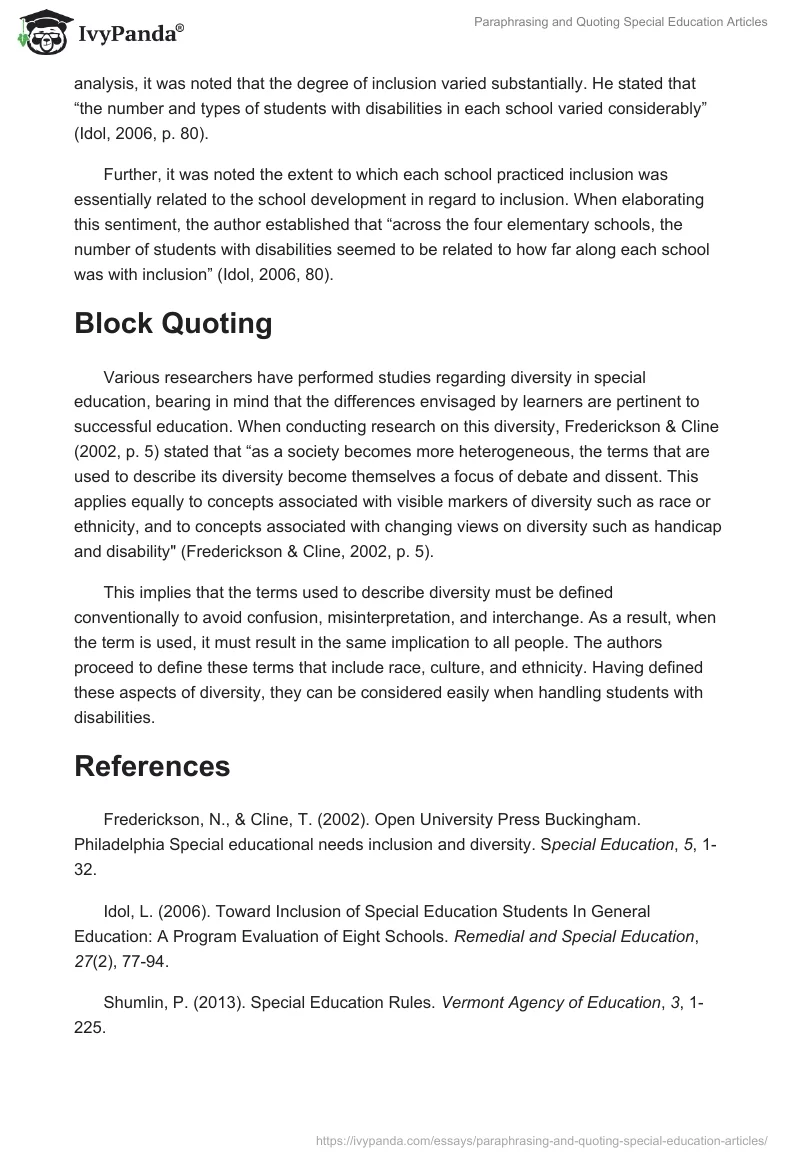Paraphrasing
Shumlin (2013) presented a set of educational rules designed to suit people with special needs. He argues that the rights of these learners from the education sector as well as other operations must be protected by all means possible. The emphasis has been laid on the eligible Vermont student who must receive the proper education. Moreover, the rules indicate that the special-education system should and must incorporate these learners in a timely manner at the age of three years.
The Free Appropriate Public Education (FAPE) is the program initiated to serve these roles, which are implemented by the Individual with Disabilities Act until a learner reaches the age of twenty-one years. The rules are distributed in a diverse manner where aspects such as private schools, technology, physical practices, professional qualifications of the educators, and insurance services, among others, have been addressed. The article shows apparently that the care that the children below the age of 3 should receive. It argues that primary development that influences future life is at this tender age and must be considered properly to avoid advancements of the needs.
Direct Quoting
Inclusion aims at incorporating students with disabilities in the general education curriculum, where they interact with regular students. In this regard, he stated that “inclusion is when students with disabilities receive their entire academic curriculum in the general-education program” (Idol, 2006, p.78). The author conducts research in eight schools seeking to determine the extent to which inclusion has been integrated into those schools.
In this light, he stated that“the primary intent of this program evaluation was to determine how much, if any, the inclusion of students with disabilities in general education class was occurring in these eight schools” (Idol, 2006, p. 77). After data analysis, it was noted that the degree of inclusion varied substantially. He stated that “the number and types of students with disabilities in each school varied considerably” (Idol, 2006, p. 80).
Further, it was noted the extent to which each school practiced inclusion was essentially related to the school development in regard to inclusion. When elaborating this sentiment, the author established that “across the four elementary schools, the number of students with disabilities seemed to be related to how far along each school was with inclusion” (Idol, 2006, 80).
Block Quoting
Various researchers have performed studies regarding diversity in special education, bearing in mind that the differences envisaged by learners are pertinent to successful education. When conducting research on this diversity, Frederickson & Cline (2002, p. 5) stated that “as a society becomes more heterogeneous, the terms that are used to describe its diversity become themselves a focus of debate and dissent. This applies equally to concepts associated with visible markers of diversity such as race or ethnicity, and to concepts associated with changing views on diversity such as handicap and disability” (Frederickson & Cline, 2002, p. 5).
This implies that the terms used to describe diversity must be defined conventionally to avoid confusion, misinterpretation, and interchange. As a result, when the term is used, it must result in the same implication to all people. The authors proceed to define these terms that include race, culture, and ethnicity. Having defined these aspects of diversity, they can be considered easily when handling students with disabilities.
References
Frederickson, N., & Cline, T. (2002). Open University Press Buckingham. Philadelphia Special educational needs inclusion and diversity. Special Education, 5, 1-32.
Idol, L. (2006). Toward Inclusion of Special Education Students In General Education: A Program Evaluation of Eight Schools. Remedial and Special Education, 27(2), 77-94.
Shumlin, P. (2013). Special Education Rules. Vermont Agency of Education, 3, 1-225.


